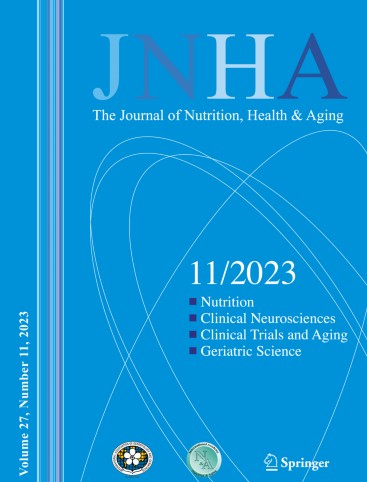Cost-effectiveness of protein-rich meals and snacks for increasing protein intake in older adults
IF 4.3
3区 医学
Q1 GERIATRICS & GERONTOLOGY
引用次数: 0
Abstract
Objectives
To investigate the cost-effectiveness of protein-rich meals and snacks for increasing protein intake in home-dwelling older adults.
Design
Cost effectiveness analysis from a randomized controlled trial, the Power Meals study.
Setting
Participants were randomized into one of three groups for eight weeks: a protein-rich meal, snack and bread (Protein), a regular meal (Normal) and a control group without meal service (Control).
Participants
Home-dwelling home care clients, caregivers and care recipients aged ≥65 years (n = 65).
Measurements
Protein intake was assessed by a three-day food diary at the end of the study. Cost for the daily diet was estimated by using Finnish grocery store databases and the prices of the food service. The cost-effectiveness was assessed by an incremental cost-effectiveness ratio (ICER).
Results
Costs for the daily diet in the Protein (8.35 €/d) and the Normal (7.94 €/d) groups were significantly higher than in the control group (5.65 €/d) (p < 0.001). Incremental cost-effectiveness analysis showed that increasing protein intake was cost-effective in the Protein group as incremental cost-effectiveness ratio was 8.11 in the Protein, 8.72 in the Normal and 6.45 in the Control group.
Conclusions
Including protein rich meals and snacks in a diet increases protein intake in home-dwelling older adults cost-effectively.
增加老年人蛋白质摄入量的富含蛋白质的正餐和点心的成本效益
目的研究富含蛋白质的正餐和点心在增加居家老年人蛋白质摄入量方面的成本效益。设置参与者被随机分为三组,每组八周:富含蛋白质的正餐、点心和面包组(蛋白质组)、普通正餐组(普通组)和不提供膳食服务的对照组(对照组)。日常饮食成本通过芬兰杂货店数据库和餐饮服务价格进行估算。结果蛋白质组(8.35 欧元/天)和正常组(7.94 欧元/天)的日常饮食成本明显高于对照组(5.65 欧元/天)(p < 0.001)。增量成本效益分析表明,蛋白质组增加蛋白质摄入量具有成本效益,因为蛋白质组的增量成本效益比为 8.11,正常组为 8.72,对照组为 6.45。
本文章由计算机程序翻译,如有差异,请以英文原文为准。
求助全文
约1分钟内获得全文
求助全文
来源期刊
CiteScore
7.80
自引率
3.40%
发文量
136
审稿时长
4-8 weeks
期刊介绍:
There is increasing scientific and clinical interest in the interactions of nutrition and health as part of the aging process. This interest is due to the important role that nutrition plays throughout the life span. This role affects the growth and development of the body during childhood, affects the risk of acute and chronic diseases, the maintenance of physiological processes and the biological process of aging. A major aim of "The Journal of Nutrition, Health & Aging" is to contribute to the improvement of knowledge regarding the relationships between nutrition and the aging process from birth to old age.

 求助内容:
求助内容: 应助结果提醒方式:
应助结果提醒方式:


